Introduction: Behavioral Development Series
If you ask parents of young kids what their biggest parenting challenge is, 90% of them will respond with something related to their child’s behavior.
Top answers are: the tantrums, the screaming, the hitting/biting/pinching, running off, fighting diaper changes, or refusing to just go the f#ck to sleep.
We feel your pain. In fact, we’re riiiight there with you.
Hi, I’m Meg Collins, the Founder and Editor of Lucie’s List. We’ve been waiting so long to write this series – and I’m so excited we finally did! I can’t tell you what a huge pain point toddler behavior issues are for parents.
Unless you’re a preschool teacher or daycare provider, most new parents don’t have tons of exposure to young children prior to having their own. That, coupled with the fact that many of us live far away from family, means that most of us are pretty much… fumbling through this on our own.

In the behavior department, it starts off easy enough. You have this cute, sweet snuggly baby… and then… BOOM.
Toddlerhood sets in.
You see, babies are relatively easy in comparison to toddlers; they can’t talk back, they don’t throw themselves on the floor in protest, they can’t say no, and they certainly can’t call their sister a “shooty-booty-poopy-head.”
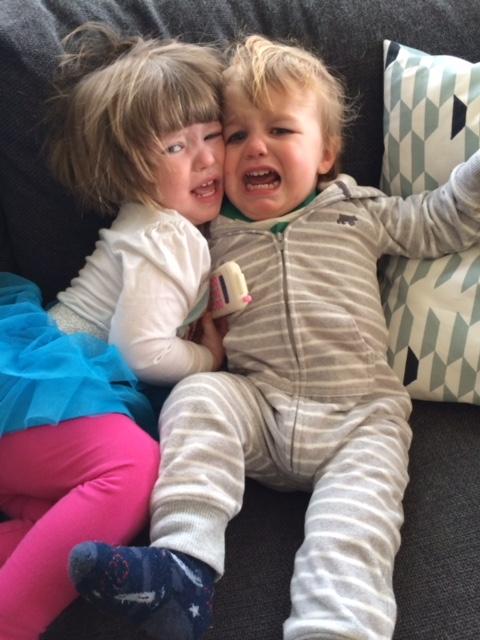
Yes, many parents cruise right along until about 18 months or so, when suddenly it seems the wheels start to come off.
You aren’t imagining things: 18 months is the first real phase of “disequilibrium” (more on that here). Next thing you know, another baby or two comes along, and now you’re dealing with multiple kids at differing stages who are all demanding your attention.
That’s when the sh!t really hits the fan – ha!
Because children don’t come with instruction manuals, we wrote this toddler behavior series to help you navigate all the challenging behavior that comes along with these years.
In this series, we offer up descriptions and examples of “normal” behavior (hint: it’s not all “good behavior,” lol) for one-, two-, and three-year-olds, as well as discipline commandments and a variety of discipline strategies to help you deal with common problem areas. We also have a specific article discussing physical punishment.
Our goal is to give you some tools and approaches you can turn to when your child’s behavior (inevitably) becomes a bit… challenging. And hopefully help you find some peace and calm in the process (or at least, maintain a tiny shred of your sanity—ha!).
Technology and Parenting
You know what else? So much has changed with our culture just in the past ten years or so. Modern society and technology presents challenges our parents never faced: the constant bombardment of screens; the prevalence of two-parent working households; the loss of unstructured, independent playtime; the inability to allow our children to fail at anything; the over-scheduling of activities; and the compulsion to constantly helicopter over our children for fear of… something bad happening.
Looking at technology and screens specifically, these things start infiltrating our kids’ lives at a shockingly young age. Recent studies have revealed some startling trends in children, tween, and teen behavior in very recent years, such as higher rates of depression/anxiety (at a young age), lack of social connection, lack of play, video game/cell phone/screen addiction, extremely low attention spans, high rates of ADHD, etc. According to the American Academy of Pediatrics, “Babies are most vulnerable to screens. Infants aged 18 months and younger should not be exposed to any digital media.”
Hence, it’s fair to say we are entering uncharted territory with parenting children in the digital world, and that we may be in for a nasty surprise if we continue to ignore what’s going on around us.
See our full article on screens and kids, Reconsidering Screen Time: Research, Reason, & Real Life
The takeaway here is that it’s never too early to learn about the effects of technology on our children so you can make some conscious decisions about how you want to manage some of these things from the start. All I’m saying is… once you start giving your toddler or young child access to your phone, for example, it’s really hard to go back!
Just had to get that out there. Back to the program…
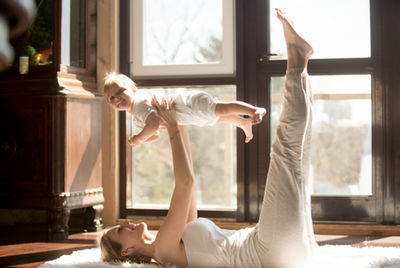
A Child’s Way of Thinking
The truth is: human children are incredibly smart. Our species has developed an insanely complex brain over our two million years or so of evolution.
It’s pretty astounding: from birth, babies spend every waking second of their lives learning, and they can retain an impressive amount of information. Yet our kids are not little grown-ups!
They don’t think – or act – like adults.
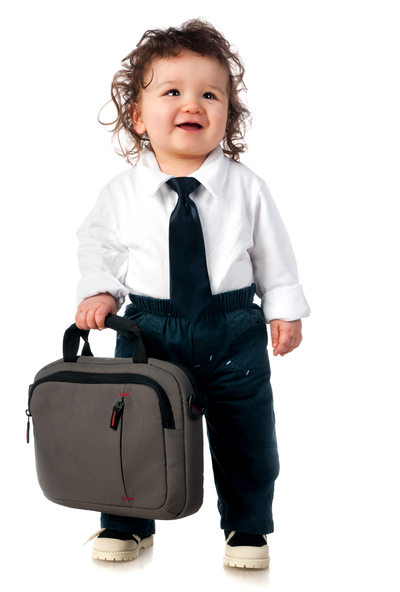
Children’s intelligence is fundamentally different than ours. If you take nothing else from this entire series, remember this: children are not logical adult thinkers, so it isn’t fair to expect them to act like us.
Emotion & Behavior – Crying, Anger, and Just Being Mean
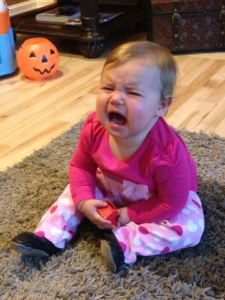
Little kids are irrational, impulsive beings with very little (if any, hah) self-control — a lot more like wild animals than grown-ups. They’re typically illogical, emotional, unreasonable, and selfish. Before the age of three, they simply cannot be reasoned with.
Instead of logic, babies and toddlers are moved by emotion, and frequently exhibit what looks like totally irrational behavior.
It’s not that toddlers have a “hard time” with reasoning, because they don’t even get the concept of reason yet. They think solely in concrete terms, mostly by doing.
They act on impulse and explore their environment using their entire bodies and all of their senses. Before the age of four, they aren’t capable of abstract thinking or generalizing concepts from one situation to the next. And although they can understand a good deal of language, they aren’t yet equipped to use their language very effectively.
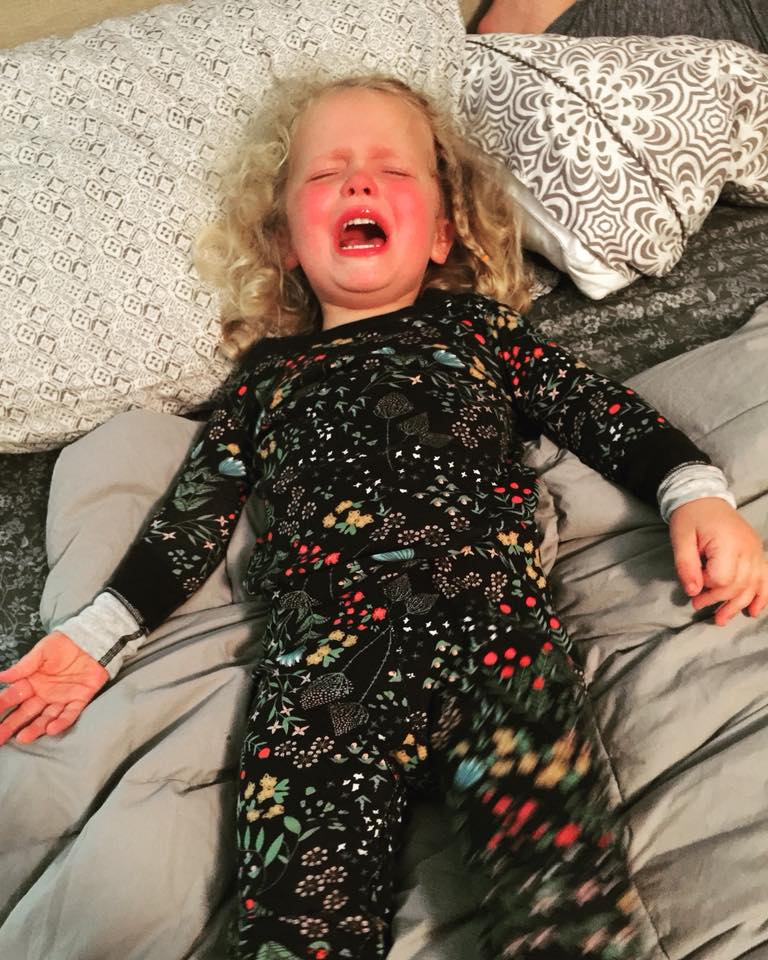
But don’t think they don’t know or remember anything – they do!
Babies and young children are like little sponges. They are driven all day long by developmental instincts to explore and assert their independence. (Have you heard “I want to do it MYSELF!” yet? If not, you soon will!) Indeed, establishing autonomy is your toddler’s main job in life.
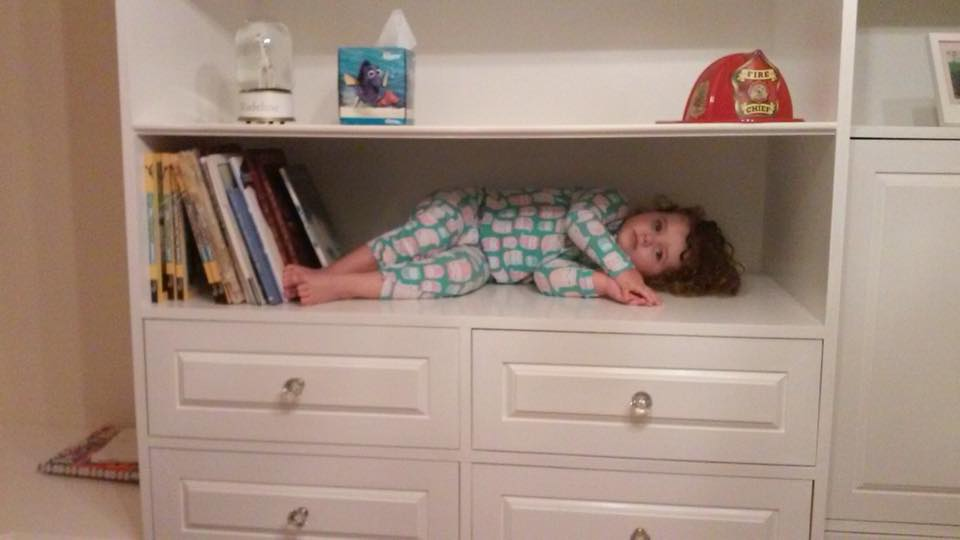
This is why understanding development is so incredibly important — so at least you can know why your child drew all over your couch with permanent marker; even though it may not make you feel any better about your ruined couch, at least you know she wasn’t trying to be “bad.” And that helps a bit!
Child Development
One big problem during the toddler years is that most parents really don’t know what their children are capable of at any given age (“appropriate behavior” is not “good behavior” is not “bad behavior”).
I know I didn’t.
For example, I see so many parents scolding their 1- and 2-year-olds for not sharing – or for not caring about other kids’ feelings. A lot of parents’ frustration comes from a mismatch between children’s actual abilities and our expectations of them at each developmental stage.
For example, most parents think their kids can implement self-control much earlier than their brains are actually capable of doing so. In fact, more than half of parents think children under the age of three have enough impulse control to resist doing something forbidden (“Don’t pull the dog’s tail!”). However, kids actually can’t control their impulses at this age. And they certainly can’t understand the feelings of the poor dog who just had his tail pulled.
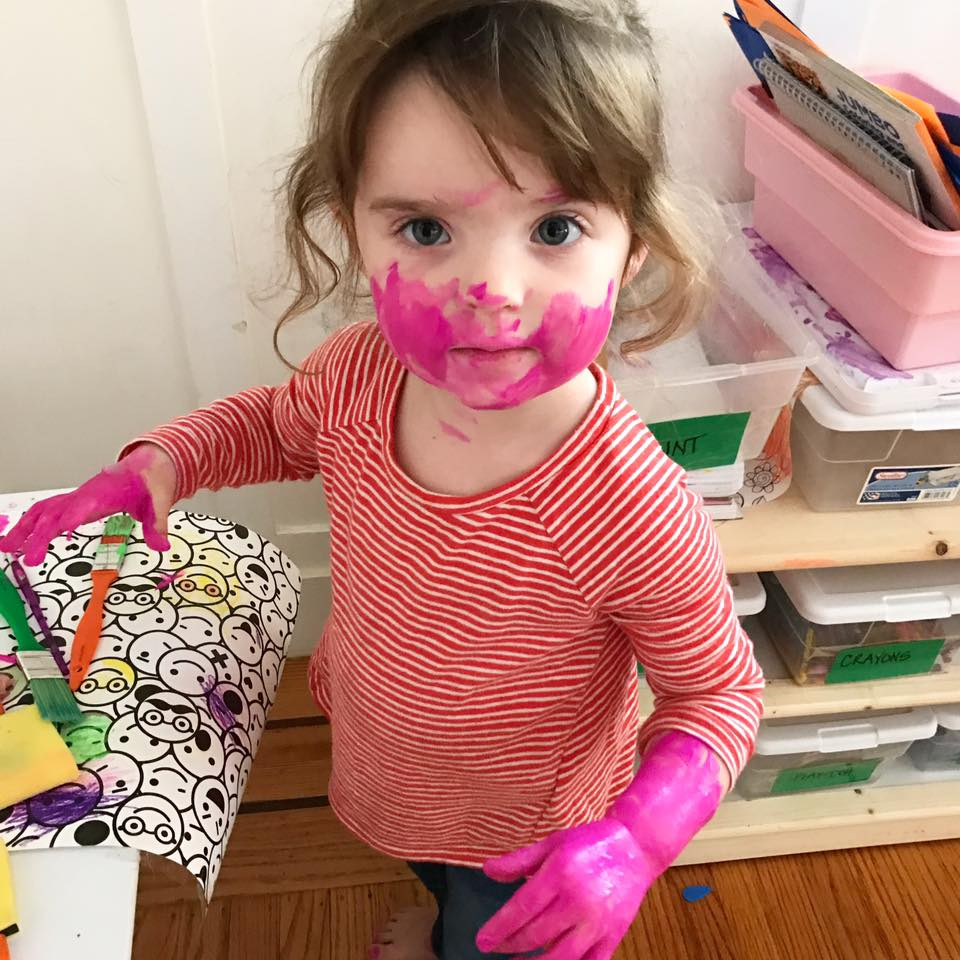
Additionally, many parents falsely believe children under the age of two have the capacity to control their emotions when they’re feeling frustrated (“Why are you crying because I put tomato sauce on your spaghetti? You love tomato sauce!”).
Science tells us that kids don’t start to exhibit this kind of impulse and emotional control until they’re almost four years old! YAH—you heard me.
If you think back a generation or two, you can now see how ludicrous it was for parents to expect their toddlers to be “seen and not heard.” (Ever heard the old phrase, “Spare the rod, spoil the child?” Talk about a lack of understanding of child development!). In the past, young children doing normal “kid things” were often told they were “very naughty!” My husband, as a toddler, was repeatedly scolded for being “too silly” (nuns, y’all).

If we can press the reset button on some of our unrealistic expectations—hard as that might be—we can hope to better understand and communicate with our kids.
Once we can see our children’s “misbehavior” as just a normal part of development, we might reconsider whether they’re actually misbehaving at all. Plus, we will be far more likely to stay calm when our kids do something we think they shouldn’t.

Instead of losing it when my son pulls every glass jar out of the refrigerator and clanks them together, I can see how he is actually exploring his surroundings with natural curiosity, and recognize that I’m wasting my energy by getting “mad” at him for doing so.
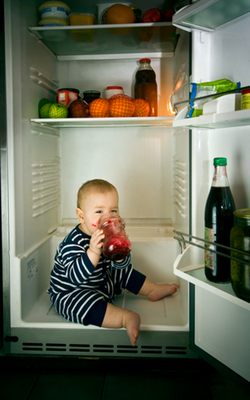
This isn’t “bad behavior,” and I simply can’t expect my not-yet-2-year-old to know that the fridge is off limits, or that glass jars might break. Instead, I can do a couple of other things — I can put a toddler lock on the fridge, or I can redirect his efforts so he can explore his environment in a way that isn’t annoying or dangerous. Or I might decide that I don’t care, and switch to plastic storage containers. Whichever direction, though, I have to realize that he has to explore– and the best tactic is to help him find something he can explore.
In setting realistic expectations, it’s important to try to step into our children’s tiny shoes. If we try thinking from their perspective, we might realize how much we ask of them every day. All they want to do — all they are programmed to do — is run around and learn about their world.
It’s that simple.
The thing is, children get just as frustrated as we do… “But I want to wear my winter coat today!” (in the middle of summer); “But I need to pull every single thing off every shelf at the grocery store!”

Now that my kids are a little older, I (Meg) have a little bit of perspective (ok, a LOT of perspective).
For some reason, I always insisted on traveling, eating out, and going to places where normal toddler behavior was not exactly compatible with the setting I was forcing upon us. I had this idea that life would continue as it always did (pre-kid) and because of that mission, I made myself absolutely crazy.
I wish I could go back and punch myself in the throat – ha!
On a recent trip, we were out at a nice restaurant celebrating someone’s birthday with the family when a toddler at the next table was totally melting down. The parents were having an absolute fit— I could see the frustration in their eyes. I felt for them… I did. But I also thought, “WHYYYYY is anyone bringing 2-year-olds to this fancy restaurant???”
I wish I could go back in time and tell my younger self these things — I would have been sooooo much more sane!
Sanity is having a super kid-friendly house and a play area where kids can be kids. Sanity is eating dinner at home with other friends and not giving a sh!t if things are messy, or if the kids don’t have their napkins in their laps, or if milk spills all over the table and dribbles onto the floor.
Instead of dreading when my husband would go out of town, I should have embraced it like I do now — “cereal for dinner, yay!!!”
THAT’S the way the toddler years should be. You know what I mean? Try to care a little less about things.
That’s the advice I would have gone back and given myself.
That’s not to say we should let our kids walk all over us like doormats.
Quite the opposite.
By using age-appropriate disciplinary techniques and setting strong boundaries, we can get more control of our kids, our households, and our own lives.
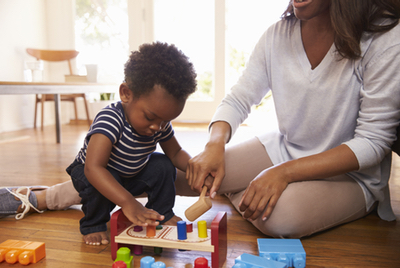
Children follow pretty predictable patterns of behavior as they grow. These behaviors are common enough to allow us to generalize.
Children tend to develop in fits and starts—they’ll make some gains, then inevitably have temporary setbacks, so that sometimes it feels like it’s “one step forward, two steps back.” (As in: I swear, he was totally potty-trained last week!)
You’re not imagining this – it’s a known fact.
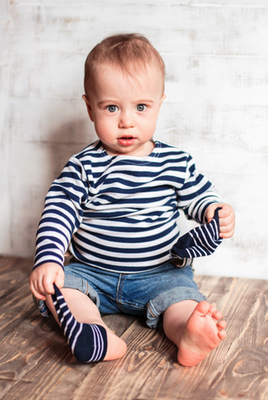
Knowing all of this, our aim with this toddler behavior series is to help parents embrace the concept of “developmentally appropriate practice,” or DAP, which teaches us to match our expectations with our child’s age and developmental stage. Using DAP is one of the most effective ways to promote desirable behaviors and minimize unwanted ones.
At the end of the day…
The fact of the matter is that the toddler years are long. Let’s be honest: the period of time before children develop impulse control, empathy, and the ability to draw conclusions might extend past our ability to tolerate it. If there’s one thing this series has taught me, it’s that I — and all of us, perhaps—need to be more patient with the growing process.
And now, if someone says to you, “Wow, she’s two… shouldn’t she have outgrown this behavior by now?,” you can confidently look them square in the eye and say, “In fact, no.” Ha!
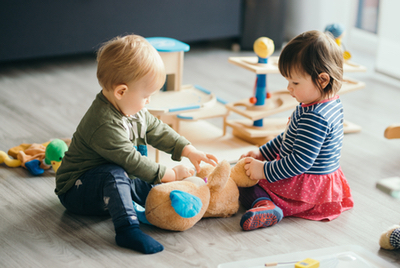
Keep reading our Toddler Behavior Series for more in-depth descriptions of normal 1, 2, and 3-year-old behavior, as well as discipline techniques to help you out when the going gets tough.
- Normal Toddler Behavior for a 1-Year-Old
- Normal Toddler Behavior for a 2-Year-Old
- Normal Toddler Behavior for a 3-Year-Old
We hope this toddler behavior series serves you well over the years. You can refer back to it each new year, when specific questions or issues pop up, or just when you feel like you could use a little help.
Enjoy these years, parents, and don’t make it harder than it has to be. One day, you’ll be dining out with your well-behaved older kids while some toddler at the next table has a meltdown, and you’ll remember how tough these years were. You might miss the baby teeth and chubby toddler legs, but you’ll look at your partner knowingly and appreciate how far you’ve come.
Keep it real. Keep it fun. And at the end of the day, if all else fails, there’s always wine!!!
I was hoping to get something on 4-5 years